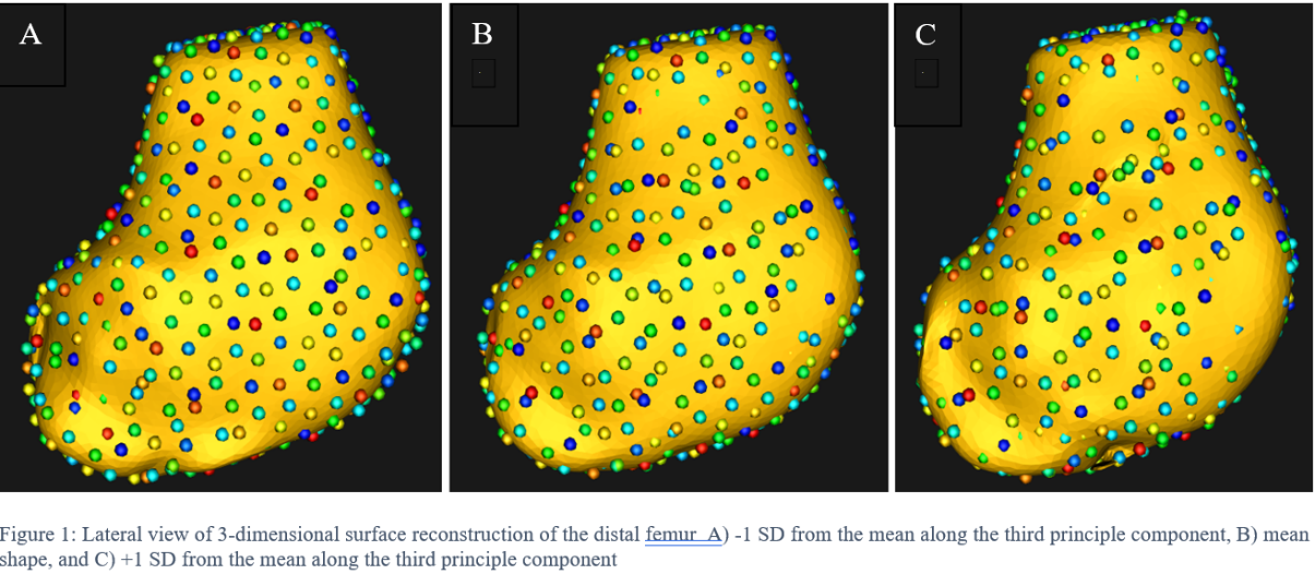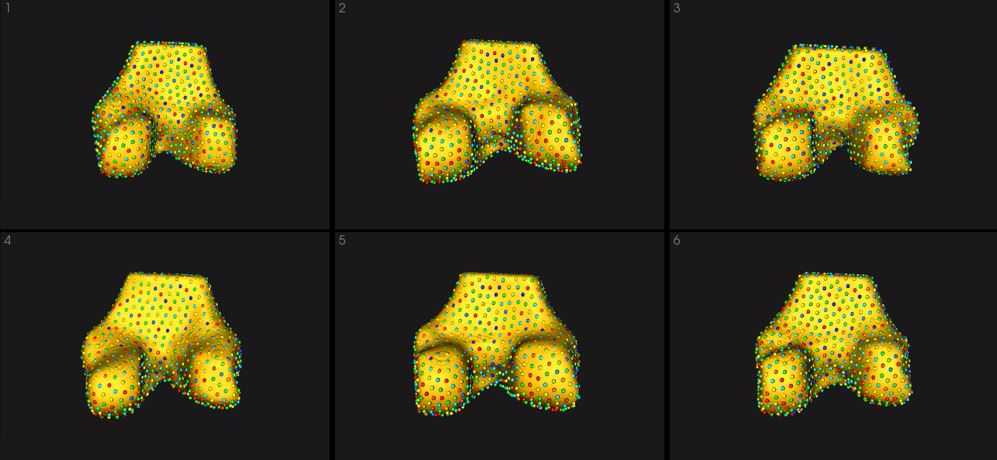Statistical Shape Modeling of the Knee
Injuries to the anterior cruciate ligament (ACL) are traumatic injuries common in all athletes. It is estimated that there are approximately 200,000 ACL tears per year. Distinct bone shapes such as narrower femoral intercondylar width, increased plateau slope, and smaller medial tibial depth have been shown to be a risk factor for ACL injuries. Posterior femoral condylar depth is another femoral geometric feature and has been shown to affect knee joint kinematics, but its association with ACL ruptures has not yet been investigated. Posterior femoral condylar has only been examined 2-dimensionally. Statistical shape modeling is a powerful mathematical tool that can analyze geometric differences quantitatively. The objective of this study was to determine modes of variation in the geometric femoral bone features of ACL injured patients using statistical shape modeling and we hypothesize that posterior femoral condylar depth will vary with one of the modes.

